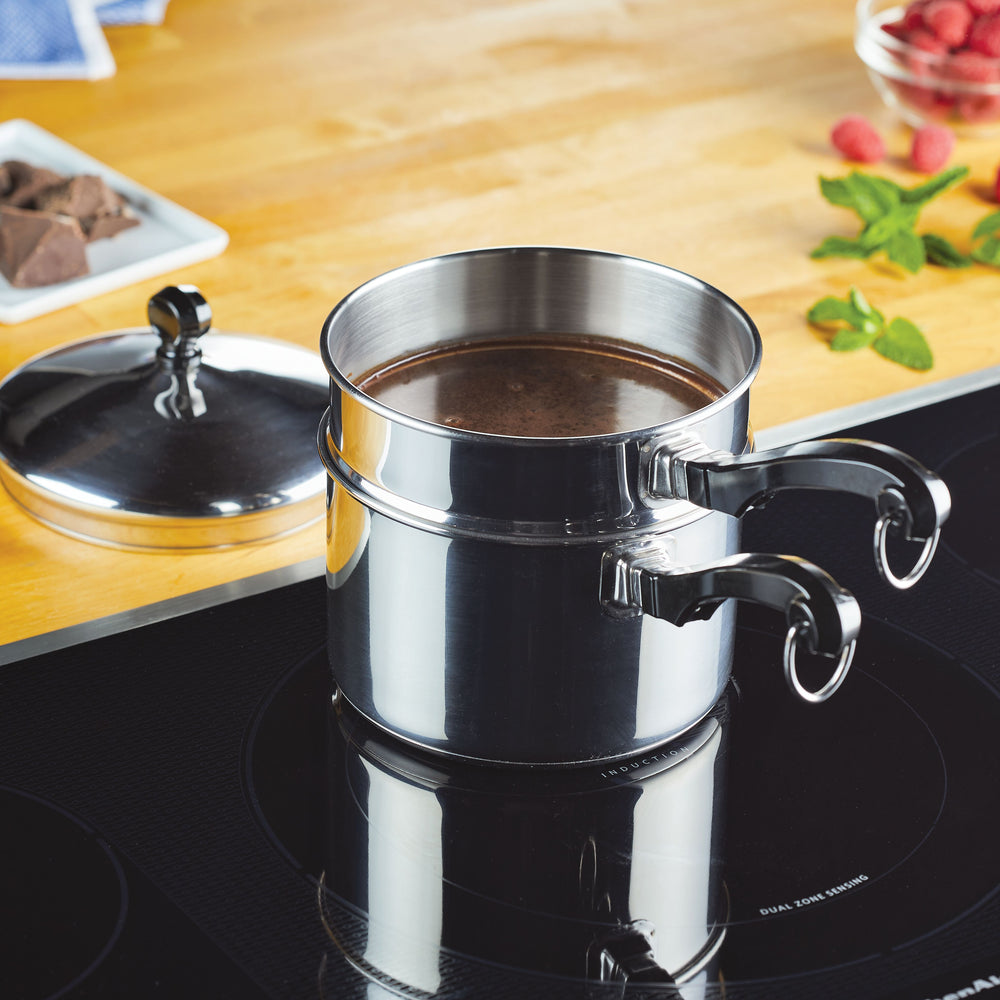Saucepan Vs Double Boiler: Which is Best for Your Kitchen?
When cooking, you often need the right tool. Two common tools are the saucepan and the double boiler. They look similar but are very different. They have different uses and benefits. This article will help you understand both. You will learn when to use each one.
What is a Saucepan?
A saucepan is a deep pan. It has a long handle. It is used for many cooking tasks. You can boil water, make soup, or cook pasta. It is very versatile.
Types Of Saucepans
There are different types of saucepans. They come in various materials and sizes.
- Stainless Steel: Durable and easy to clean.
- Non-Stick: Food does not stick. Easy to clean.
- Copper: Heats up quickly. Good for precise cooking.
- Ceramic: Non-toxic and eco-friendly.
Uses Of A Saucepan
A saucepan is good for many tasks. Here are some common uses:
- Boiling water for tea or coffee.
- Making sauces like tomato or cheese sauce.
- Cooking grains like rice or quinoa.
- Simmering soups and stews.

Credit: www.amazon.com
What is a Double Boiler?
A double boiler is two pans. One pan sits on top of the other. The bottom pan holds water. The top pan holds food. The water heats the food gently.
Types Of Double Boilers
Double boilers come in different materials. Here are some common types:
- Stainless Steel: Durable and easy to clean.
- Glass: You can see the food cooking.
- Aluminum: Lightweight and heats up fast.
Uses Of A Double Boiler
A double boiler is good for gentle cooking. Here are some common uses:
- Melting chocolate without burning.
- Making custards and puddings.
- Cooking delicate sauces like hollandaise.
- Preparing egg-based dishes like sabayon.
Saucepan vs Double Boiler: Key Differences
Both tools are useful. But they have key differences. Here are some main points:
| Feature | Saucepan | Double Boiler |
|---|---|---|
| Design | Single pan with long handle | Two pans, one on top of the other |
| Heat Source | Direct heat from burner | Indirect heat from steam |
| Cooking Style | Boiling, simmering, and sautéing | Gentle cooking, melting, and warming |
| Common Uses | Boiling water, cooking pasta, making soups | Melting chocolate, making custard, delicate sauces |
When to Use a Saucepan
Use a saucepan for many tasks. It is very versatile. Here are some situations:
- Cooking pasta or boiling potatoes.
- Simmering a pot of soup or stew.
- Making a batch of rice or quinoa.
- Creating a delicious sauce for dinner.
When to Use a Double Boiler
A double boiler is for gentle cooking. It is perfect for delicate tasks. Here are some situations:
- Melting chocolate for baking.
- Cooking custards or puddings.
- Making delicate sauces like hollandaise.
- Preparing egg-based dishes without curdling.
Choosing the Right Tool
Choosing the right tool is important. Think about what you are cooking. A saucepan is versatile. It can do many tasks. A double boiler is for gentle cooking. It is for delicate foods. Choose based on your needs.

Credit: farberwarecookware.com
Care and Maintenance
Both tools need care. Here are some tips:
Cleaning A Saucepan
- Wash with warm, soapy water.
- Use a soft sponge to avoid scratches.
- Dry completely to prevent rust.
Cleaning A Double Boiler
- Disassemble the double boiler first.
- Wash both parts with warm, soapy water.
- Dry thoroughly before storing.
Frequently Asked Questions
What Is A Saucepan Used For?
A saucepan is used for boiling, simmering, and making sauces.
What Is A Double Boiler Used For?
A double boiler is used for gently heating and melting.
Can You Use A Saucepan As A Double Boiler?
Yes, you can use a saucepan with a heatproof bowl.
Which Is Better For Melting Chocolate?
A double boiler is better for melting chocolate gently.
Do I Need A Double Boiler For Custard?
Yes, a double boiler is best for making custard.
Is A Double Boiler Necessary For All Recipes?
No, a double boiler is only needed for delicate recipes.
Conclusion
Both saucepans and double boilers are important. They have different uses and benefits. Use a saucepan for everyday tasks. Use a double boiler for delicate cooking. Knowing when to use each will make cooking easier. Choose the right tool for the job. Happy cooking!




![5 Best Stainless Steel Cookware for Gas Stove [In 2025]](https://homeunderstandable.com/wp-content/uploads/2025/04/best-stainless-steel-cookware-for-gas-stove.jpg)